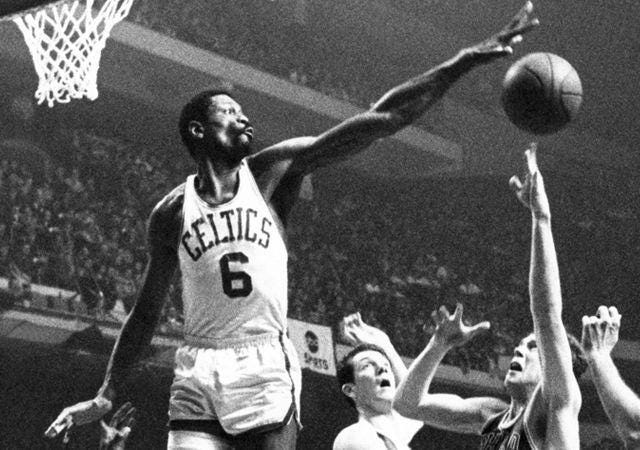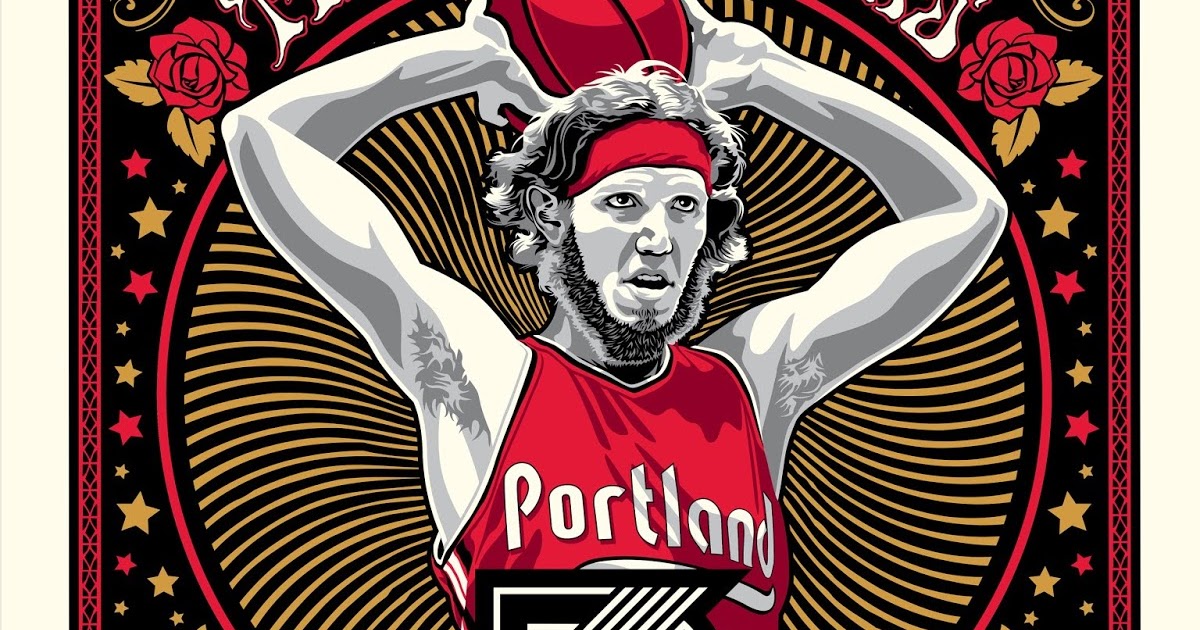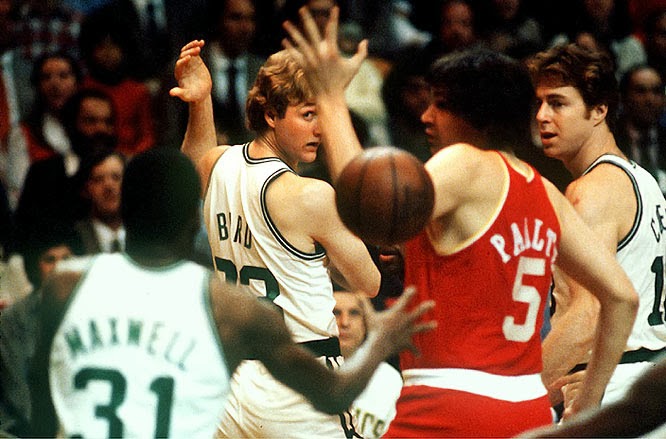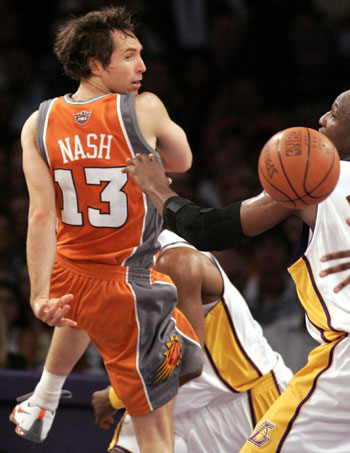Okay, a little tricky because we're going into the deep past before our time, which means I think you've really just got to assign a guy to a decade rather than going by who you were enjoying at the time, but I dig it because I really like learning about the past.
Also, feel a need to say that with the more modern guys, a lot of my affinity toward them came after I came to appreciate how effective what they were doing was.
Going to start with the '20s because to be honest it's hard to even have a handle on what basketball looked like when it was played in the Cage, and so there's not a lot to grab on to with the players.
1920s - Dutch Dehnert (Original Celtics)
The originator of the Pivot as we know it which proceeded to catch on like wildfire. The player today who plays most like Dehnert is Nikola Jokic, though Dutch stood a mere 6'1".
Also, note the man's body. Dutch was a man who came of age in Cage basketball where the reason you passed so quickly was because if you didn't, you'd literally get manhandled and end up with marks all over your body from the net ("Cage") that surrounded the court. He was an excellent passer, and also someone with a body to withstand assault.
1930s - Hank Luisetti (Stanford)
Often called the first modern basketball player, and I actually think there's more truth of this in the 21st century than their was in late 20th. Luisetti is the one known for pioneering the one-handed shot. This was in an age where people practiced a slow, 2-handed set shot release, and Luisetti came in with a 1-handed release he could get off rapidly. An interesting wrinkle to this is that he tended to jump while he shot (and he was often running as he shot it) which later commentators have emphasized is "not like the jump-reach apex-then shoot jump shot today"...but now that we're in the age of Curry, I think we've actually gone back to something pretty close to Luisetti's approach. Curry and others surely have vastly more refined shooting accuracy based on subtle improvements that have come since...but this was the moment where the seed took hold:
December 30th, 1936, Madison Square Garden - when the mecca of (college) basketball got to see Luisetti come from the West Coast, and crush the best the East Coast had to offer.
ftr, Luisetti definitely seems like he might be described as one of the first heliocentric players, so I wouldn't say he played like Curry has come to play. I kinda wanna say that Kyrie Irving might be a closer comparison as Luisetti was known for his ball-handling wizardry and extremely aesthetic game, though it'd obviously still seem quite stilted to us playing at a time where ball weren't standardized, floors weren't standardized, and carrying the ball was for football.
1940s - Goose Tatum (Harlem Globetrotters)
Known primarily as the original clown of the Globetrotters - whose comedic capabilities, the team would reshape themselves around as they stopped being able to keep the best Black basketball players to themselves. But in Tatum's day, the Globetrotters were still an exceptional basketball team, known for beating George Mikan's Minneapolis Lakers in each of the team's first two meetings...which only began after the Lakers were already the champions of whatever league they were in.
The thing that fascinates me about Tatum is that he's the reason why the Pivot play that Dehnert originated in the '20s lived on in a very different form with the Globetrotters than it did in the NBA. Originally, the Pivot played in the high post with the intent to dish the ball to a cutting teammate at their preferred place of shotmaking, but once Mikan came around in the NBA, the pivot really focused first and foremost on grinding toward the rim himself to score.
On the Trotters on the other hand, the Pivot was your Head Clown. He was the one deciding what came next, and when to run which "reel" (plays designed for humor rather than basketball value)...and if you'll note the size of his hands, giant hands really help with the capacity for tricking your opponent. In the image above, Tatum can pass the ball, hand it off, or literally yank it back at any time...all the while having an incredibly tight grip on the ball.
I see the true weaponization of gigantic hands in basketball to be a lost art at this point. Players should be being scouted for their hand size, and those who can easily palm the ball, need to be shown how useful that can be.
1950s - Bill Russell (USF, Boston Celtics)
The most successful basketball player in men's basketball history, and arguably the most mentally ahead of his time (though fellow Californian Luisetti has strong claim himself). Of course "mentally ahead" doesn't necessarily paint the right picture. What he really was, was mentally different in ways that allowed him to become extremely innovative. His grasp of basketball space and whittling away opponent competitive advantage is downright out of Century 21.
1960s - Connie Hawkins (Pittsburgh Rens, Harlem Globetrotters, Pittsburgh Pipers, Phoenix Suns)
The apex of Big Hand basketball comes with the Hawk. People tend to call him a proto-Dr. J, but while he had that same high-flyin swooping tendency - based on hops, agility & big hands - after his years with the Globetrotters, he came out with a schoolyard-honed variant of the Big Hand Pivot model.
It's honestly probably Jokic again who plays most like Hawkins today, but the differences would be far greater than those between Dehnert & Jokic where much of the difference would simply stem from Jokic being better at the things Dehnert was so good at.
1970s - Bill Walton (UCLA Bruins, Portland Trail Blazers)
Walton continues this trend of me being obsessed with passing pivots...though of course the reality is that the obsession led to the historical research, so loving Walton's game and attitude came first.
1980s - Larry Bird (Boston Celtics)
Blasphemous of me to go Bird over Magic here - and not how I felt at the time - but I think Bird's approach is more unique. I think sadly that Bird might have been better had he emulated Magic more, but my god, watching Bird you just realize how fast some people brains operate. Highlight reels of Bird are forever breath taking.
1990s - Hakeem Olajuwon (Houston Rockets)
My god, the body control and the capacity he had for continuing to learn and master what his set his mind to. I think what we're essentially seeing with the internationalization of the game is a rising tide that could have easily not produced any champion superstars until the 2010s. The Dream was a marvel of an outlier.
2000s - Steve Nash (Dallas Mavericks, Phoenix Suns)
Being so wrong about Nash is what ended up being the catalyst for me to shift from simply being a fan of the game, to being something more invested. And he was beautiful to watch out there. Off-the-charts level improvisation and decision making.
2010s - Steph Curry (Golden State Warriors)
A revolutionary player sustaining his revolution with a continued visibility rarely seen. The game is going to continue to evolve in the wake of what Curry has shown is possible.
Too early to speak to who will define the 2020s for me, but I will give a shout out to someone whose game makes me very happy...




















































